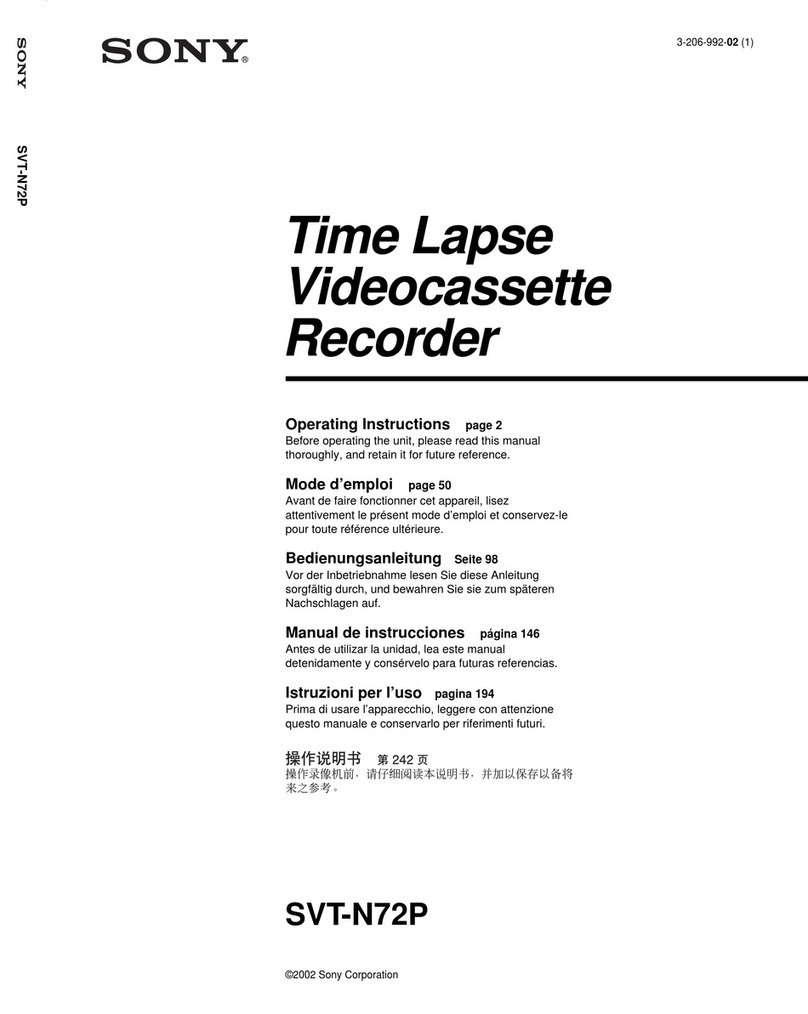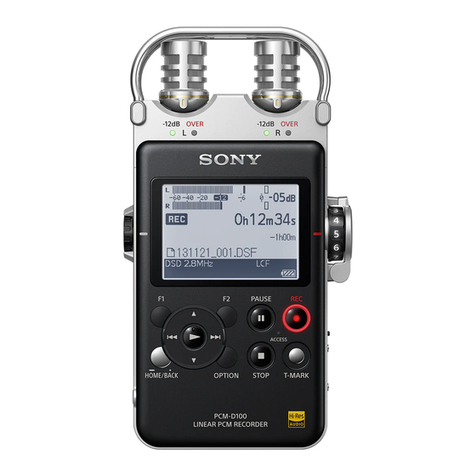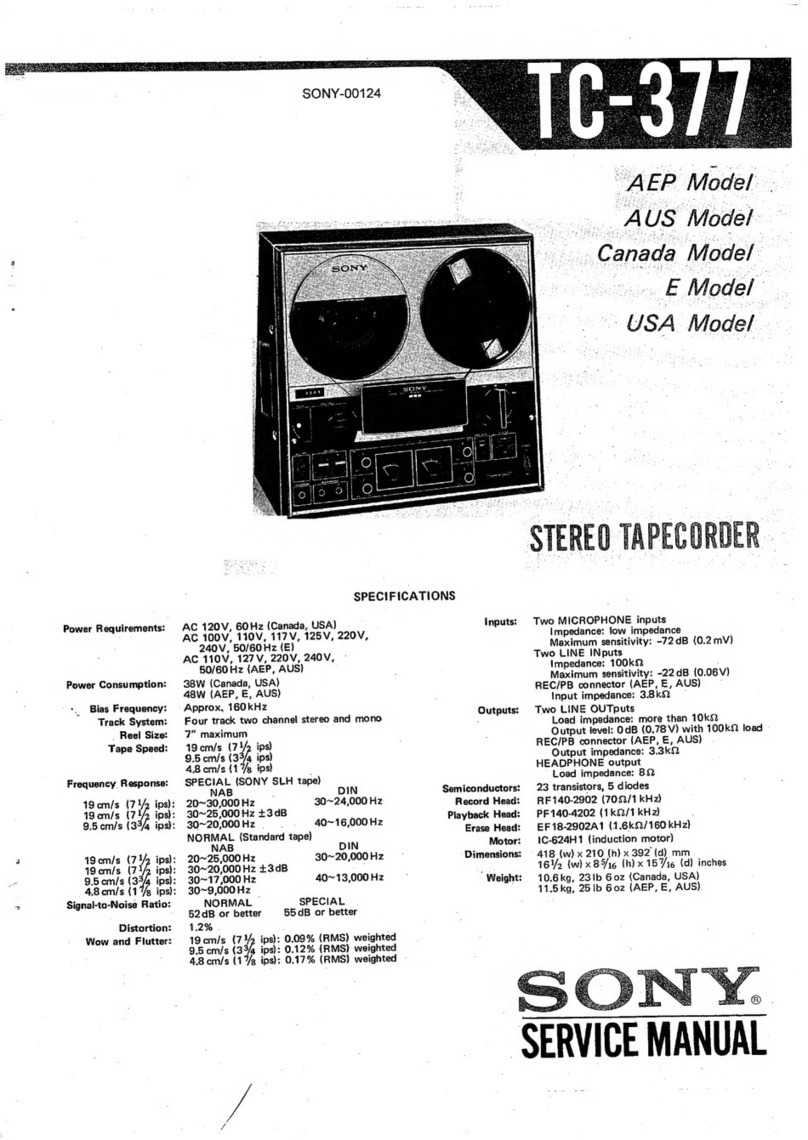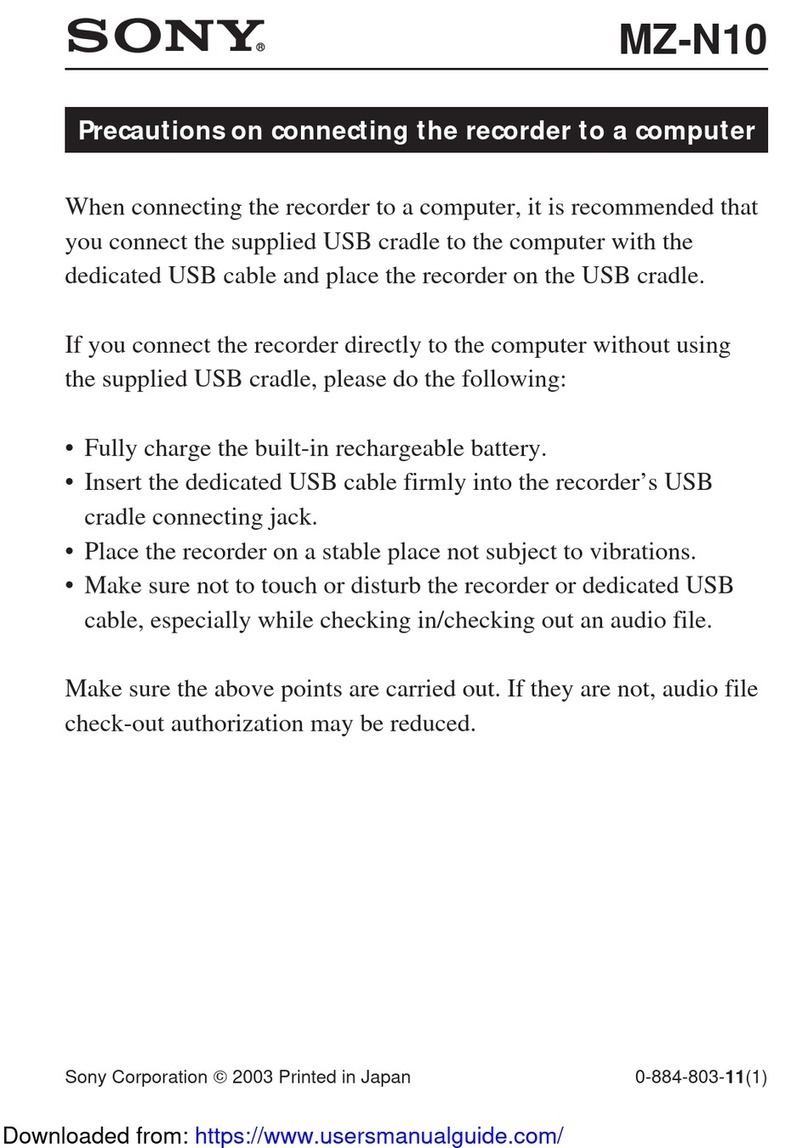Sony TC-730 User manual
Other Sony Measuring Instrument manuals

Sony
Sony SVT-N72P User manual

Sony
Sony MAV-555A User manual

Sony
Sony DK110NLR5 User manual

Sony
Sony NEX-FS100C User manual

Sony
Sony PWS-100TD1 User manual

Sony
Sony AXS-R7 User manual

Sony
Sony PCM-D100 User manual

Sony
Sony LE-SP6800 Series Installation and operating manual

Sony
Sony Ipela NSR-S20 User manual

Sony
Sony PMW50 User manual

Sony
Sony BVU-800 User manual

Sony
Sony MSZ-2100G User manual

Sony
Sony TC-788-4 Setup guide

Sony
Sony XDBK-105 User manual

Sony
Sony DVW-250 User manual

Sony
Sony DVCAM DSR-80 User manual

Sony
Sony MZ-N920 User manual

Sony
Sony 3026 Operating and maintenance manual

Sony
Sony TC-377 User manual

Sony
Sony Handycam HDR-HC9 User manual
Popular Measuring Instrument manuals by other brands

Powerfix Profi
Powerfix Profi 278296 Operation and safety notes

Test Equipment Depot
Test Equipment Depot GVT-427B user manual

Fieldpiece
Fieldpiece ACH Operator's manual

FLYSURFER
FLYSURFER VIRON3 user manual

GMW
GMW TG uni 1 operating manual

Downeaster
Downeaster Wind & Weather Medallion Series instruction manual

Hanna Instruments
Hanna Instruments HI96725C instruction manual

Nokeval
Nokeval KMR260 quick guide

HOKUYO AUTOMATIC
HOKUYO AUTOMATIC UBG-05LN instruction manual

Fluke
Fluke 96000 Series Operator's manual

Test Products International
Test Products International SP565 user manual

General Sleep
General Sleep Zmachine Insight+ DT-200 Service manual



















